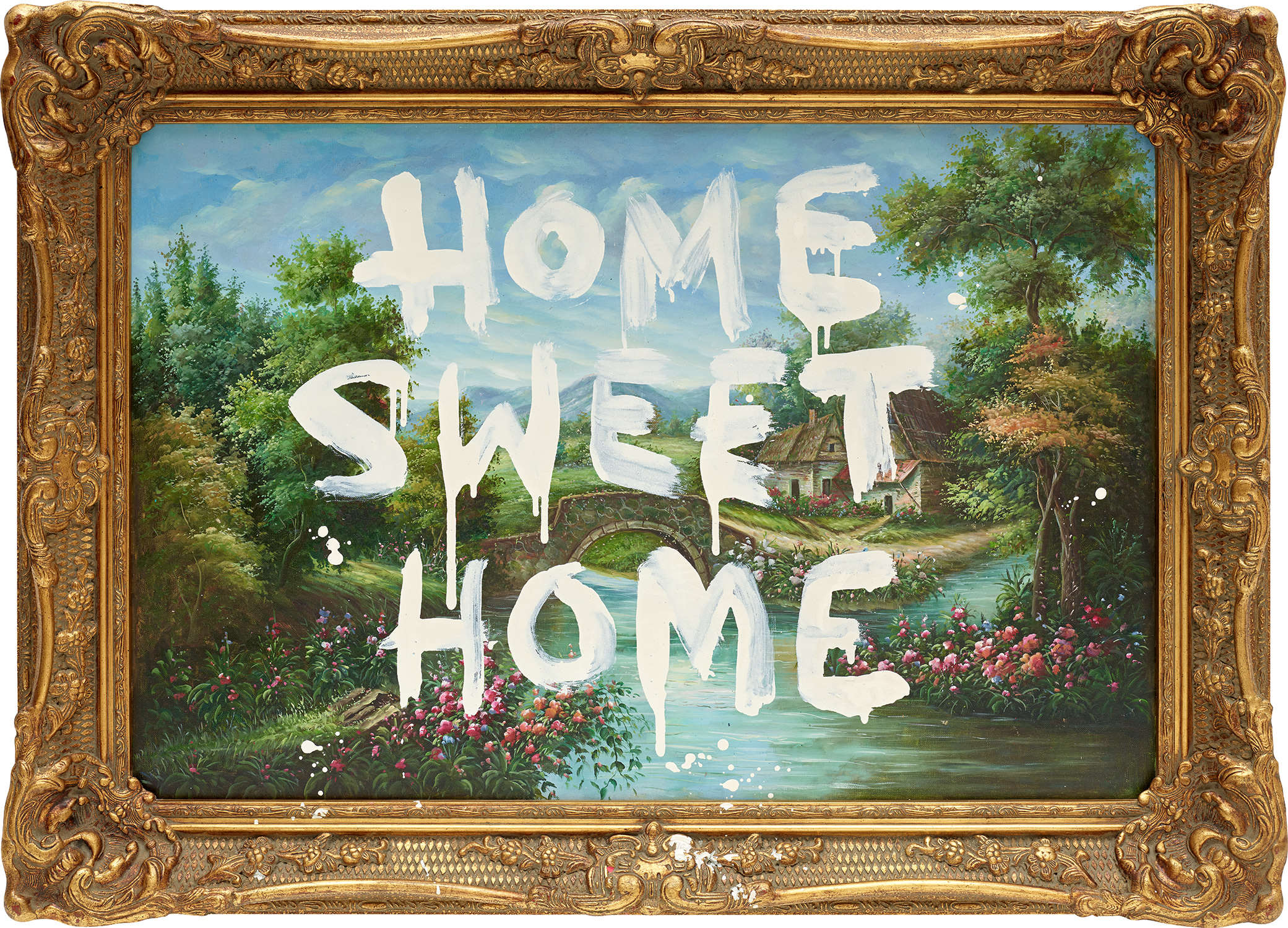

21Ο◆
Banksy
Home Sweet Home
Further Details
Full-Cataloguing
Banksy
British | 1975Anonymous street artist Banksy first turned to graffiti as a miserable fourteen year old disillusioned with school. Inspired by the thriving graffiti community in his home city, Bristol, Banksy's works began appearing on trains and walls in 1993, and by 2001 his blocky, spray-painted works had cropped up all over the United Kingdom. Typically crafting his images with spray paint and cardboard stencils, Banksy is able to achieve a meticulous level of detail. His aesthetic is clean and instantly readable due to his knack for reducing complex political and social statements to simple visual elements.
His graffiti, paintings and screenprints use whimsy and humour to satirically critique war, capitalism, hypocrisy and greed — with not even the Royal family safe from his anti-establishment wit.